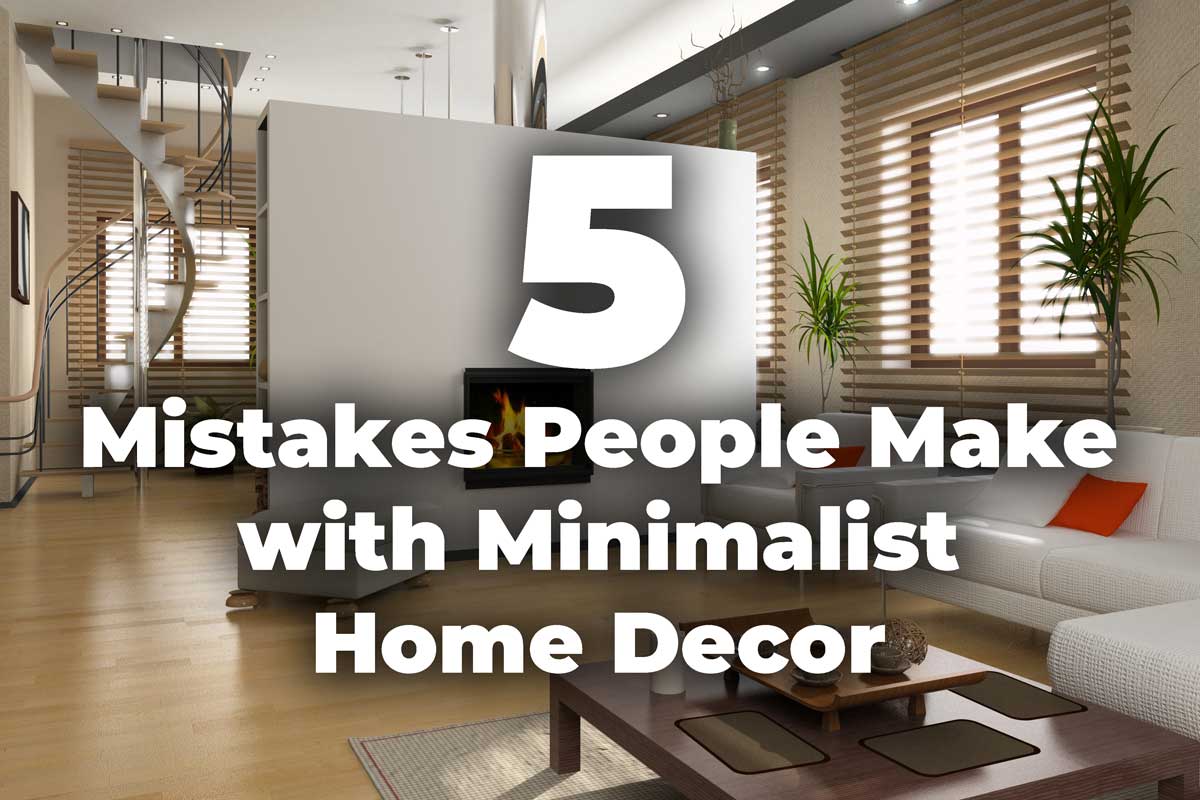Minimalism is a hot interior design trend that has been around for decades. Minimalism is a style of design that strives for simplicity — whether in the home, the office, or even in fashion. This style is about keeping the space open and free from clutter. The goal is to focus on the bare essentials and strip away everything else.
Many people admire the minimalist style and strive to achieve it. A simplistic, minimalistic look can create a pleasing contrast between different pieces and give your home a clean, open look. Still, it’s not uncommon to see people who are new to the idea of minimalism in interior design making common mistakes. By learning what not to do while having a minimalist home, you’ll be able to create your own gorgeous minimalist style space. Let’s look at some minimalist decorating mistakes to avoid.
Adding too much furniture
Filling a room with furniture is inconsistent with the concept of minimalism. Furniture pieces — such as couches, tables, and chairs — tend to be bulky and take up a lot of visual space. With minimalism in mind, select furniture that will serve more than one purpose in a room. For example: A desk can also be used for extra storage space; a coffee table can have a built-in shelf; an ottoman can serve as both extra seating and storage or even double as a coffee table. Furniture that multitasks reduces the number of pieces you need to place in a room.
Remember, one element of minimalism is to ensure that every piece you add to your home has a purpose. One way to avoid adding too much furniture is to empty your room first, then put back in only what you need. Less is more when decorating with a minimalist style.
Leaving empty space without lighting
A common mistake made when decorating with a minimalist aesthetic is to leave too much empty space without lighting. This is a problem because, without proper lighting, the room will feel empty and stark. What’s the fix? Add task lighting over key areas. For instance, place a lamp on a console table behind your sofa, or add a lamp next to your bed. You can also hang a pendant light or two to create layers of light in the space.
Light is crucial to any room, but even more so in minimalist spaces because there’s less to focus on. Make sure you have adequate lighting throughout the room — and don’t skimp on table lamps or floor lamps that add visual interest. Light creates contour and texture that adds interest to a room.
Using too many colors
The beauty of minimalism is its simplicity. No one wants to be in a space that’s visually overwhelming, especially when you’re trying to relax. So, having too many colors can make your home look cluttered and busy, even if it’s not filled with lots of things.
If your goal is a minimalist look, stick to a neutral color palette. This doesn’t mean everything has to be white or black, though — try using shades of gray and browns, as well as wood textures, to add dimension to your home.
Even if you prefer to decorate with color, stick to two or three colors, or even go with a monochromatic color scheme. A simple way to ensure you’re not using too many colors in a room is to remember the 60/30/10 rule: 60 percent of your color palette should be your dominant color, 30 percent should be your secondary color, and 10% your tertiary color. The design professionals at Herzog’s Paint Centers can provide helpful guidance and confidence when selecting the right palette from over 3500 Benjamin Moore colors to consider.
Lack of texture
Lack of texture is one of the most common mistakes people make when trying to create an ultra-minimalist space. A few carefully chosen textured pieces add visual interest to the room and help break up all that open space. This is especially true in large, open spaces such as a loft or studio apartment with tall ceilings.
Texture can elevate a space, adding warmth and dimension. When done well, texture can also add visual interest without being overbearing. You can add texture with everything from patterned throw pillows and blankets to area rugs, plants, art, and sculptures. Choose natural materials for a more organic feel or opt for modern materials like glass and metal for a more industrial vibe.
Thinking minimalistic needs to be ultra-modern
When it comes to minimalism, it’s a common misconception that this design style always means “ultra-modern.” But the truth is, minimalism doesn’t have to be ultra-modern at all. That’s a common myth. You don’t have to use ultra-sleek furniture and metal finishes or make your home look like an Ikea showroom to create a minimalist atmosphere in your home.
Minimalism is about getting rid of clutter and streamlining the look of your space by focusing on the basics. It focuses on the essentials, what’s needed to make a room functional and comfortable. But that doesn’t mean every minimalist space must look alike or be ultra-modern. This style can be adapted for any home-contemporary, traditional, cottage, or rustic, by choosing furniture, fabrics, and accessories that complement the architecture and style of your home.
The Bottom Line
Simple and minimal doesn’t have to be monotonous. It’s easy to fall into a minimalist hole so that the rest of your home never sees the light of day. But with a little creativity, you can pull off a more sophisticated look with fewer pieces. It all comes down to filling in the gaps in your minimalist design with strategic pops of color and pattern.


